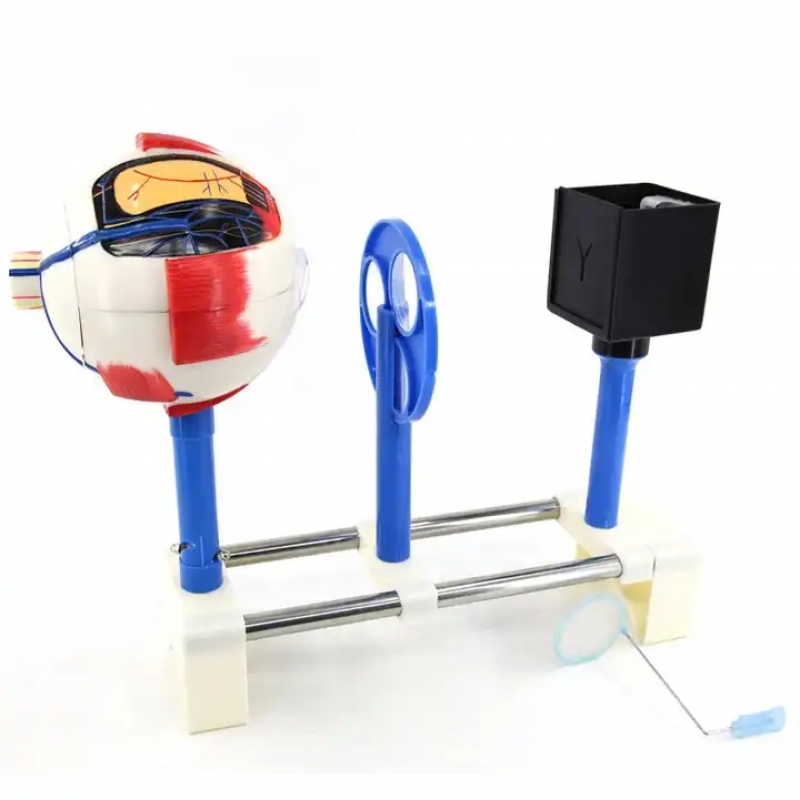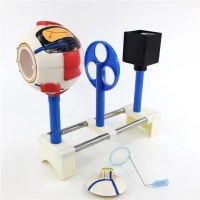





Functional Human Eye Model:
Advanced didactic model illustrating the anatomical and physiological optics of the human eyeball, featuring sagittal horizon section for internal visualization.
Removable superior hemi-globe and intraocular structures: cornea, lens, vitreous body, and retina, for comprehensive anatomical exploration.
Functional lens apparatus enables simulation of accommodation, image focusing on the retina, and demonstration of refractive errors (myopia, hypermetropia) with corrective modalities.
Incorporates adjustable optical elements to visualize the principles of far and near sight, astigmatism, and corrective lens placement.
Essential for ophthalmologic, optometric, and visual sciences education—supporting practical demonstration of ocular physiology, refraction, and clinical optics.
The Human Eye Functional Model (MYASKRO) is a sophisticated educational apparatus designed to elucidate the anatomical, physiological, and optical principles of human vision. The model features a bisected eyeball with removable upper hemi-globe, providing unhindered access to intraocular components such as the cornea, crystalline lens, vitreous body, and retina. The flexible lens mechanism allows for hands-on demonstration of accommodation and focal adjustment, simulating image formation on the retinal surface.
By manipulating the lens system, users can demonstrate the pathophysiology of refractive errors—including myopia (nearsightedness) and hypermetropia (farsightedness)—and illustrate the optical correction achieved with convex or concave lenses. This model is indispensable for ophthalmology, optometry, and vision science instruction, allowing students and clinicians to visualize and understand the complex interplay between ocular anatomy and visual function, as well as to teach the principles of clinical refraction and corrective optics.
Total Reviews (0)